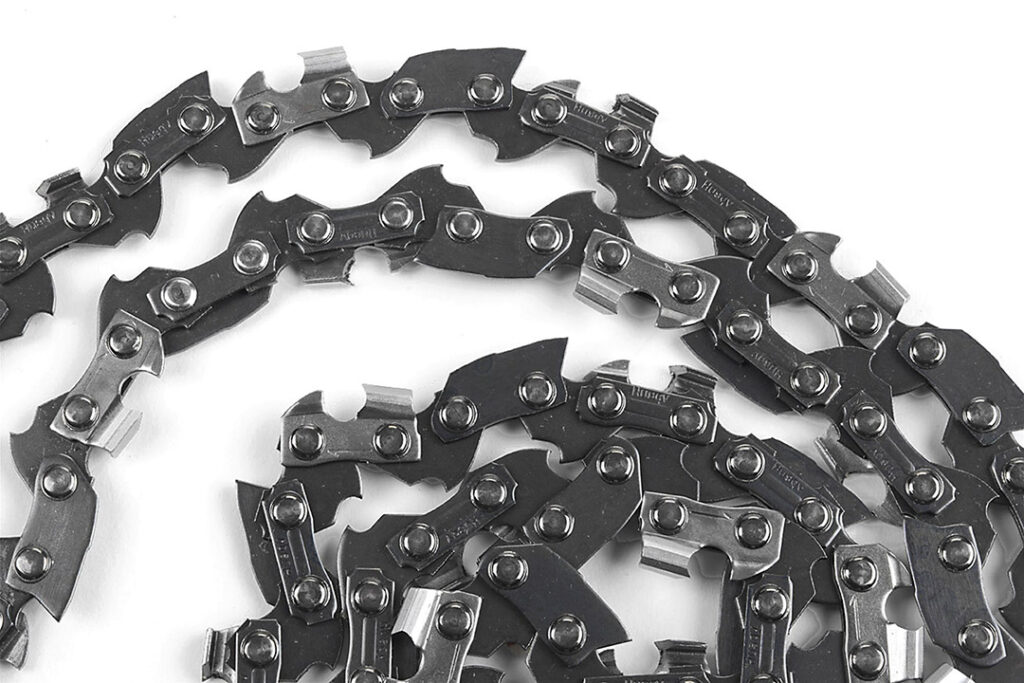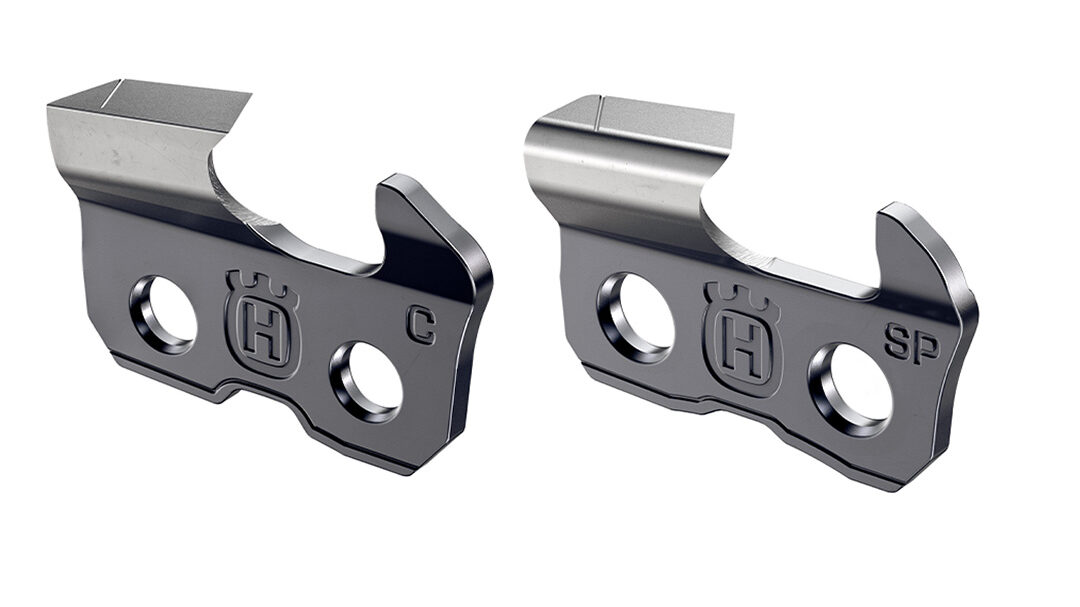Buying and maintaining a chain for your chainsaw
Foresters, tree surgeons, farmers and homeowners who buy chainsaws can spend many hours deliberating on the right brand and model. But did you know that the choice of chain is just as important? Making the correct decision allows you to get more out of your chainsaw.
Knowing the pitch, gauge, and number of drive links is the first step. After you have the answers to these, the rest of the decision is essentially based on your preferences. This handy guide will help you choose the best chain and give you great maintenance tips to keep it sharp and effective.

What are the pitch and gauge on a chain?
The pitch is the average separation between two rivets. Its value is typically shown on the guide bar as 1/4″, .325″, 3/8″, or .404″. Since it can be a little difficult to measure, our best recommendation if you are unable to find it is to have your dealer measure your previous chain.
On the other hand, the gauge is the thickness of the drive links, which ensures that the chain fits into the guide bar properly. Like the pitch, the gauge (.043″, .050″, .058″, or .063”) is most likely shown on the guide bar. We recommend your dealer measure the gauge on your old one if you don’t know how.
The pitch and number of drive links define a chain’s length. The links on the old one must be counted because this is typically not printed on the bar or anywhere else on the product. Your Husqvarna dealer will know how to guide you and ensure you buy the right chain for your machine.

Do the teeth matter?
Yes, the teeth on the chain do matter. However, using a more aggressive chain on an underpowered chainsaw will not give you better performance. The “bite” will not improve if the machine does not have enough power to spin the blade fast enough.
Your cutting equipment will always operate at its best if you make sure that your saw and chain are precisely suited (aggressive chain for a powerful saw). The teeth come in three varieties for different uses:
- Chipper – These teeth have rounded corners, which keeps them sharper for the longest time, making them more suited to hardwoods. Cutting fresh wood or tree branches that are still attached can be difficult with chipper chains.
- Semi-chisel – The corners on a semi-chisel chain are slightly less rounded than the chipper, making them better for semi-hardwoods and dirty environments.
- Chisel – The chisel chain has sharp corners, making it great for fresh wood and softwood. The angled teeth can separate wood fibres cleanly, but the chain tends to lose its sharpness quite quickly.

How to maintain your chain and keep it sharp
Chain maintenance is important for both efficiency and safety. Here is some helpful maintenance advice:
- Lubricating chains – Use high-quality bar and chain oil at all times. Motor oil isn’t made for the high-speed friction of a chainsaw, so never use it. Check the oil reservoir often and top it up as necessary. Make sure the oil is getting to the chain. This can be done easily by briefly running the chainsaw with the tip of the blade close to a dry surface and looking for oil spray.
- Tension in the chain – Check the tension regularly, particularly if it’s new or has been used for a long time. You should be able to manually pull the chain around the guide bar, even if it is snug. A tight chain can lead to excessive wear, and a loose one can come off. Since it expands when heated, adjust the tension when it’s cool.
- Sharpening a chain – A dull chain can be spotted by its tendency to produce sawdust rather than wood chips. This requires more energy to cut and tends to pull to one side when the chainsaw is cutting. To maintain the right cutting angles, use a file guide and a round file of the appropriate size. To maintain the depth gauges at the proper height, use a flat file and depth gauge tool. Remember to keep your angles constant; pay special attention to the sharpening angles. If you’re unsure, get a professional to sharpen your chain for you.
- Guide bar maintenance – Clean the guide bar after every use to remove sawdust debris. Flip the guide bar every few months to prevent uneven wear, and while you’re doing this, clean the bar groove.
- Other maintenance – Inspect the sprocket for wear and replace it when needed. When not in use, store the chainsaw in a dry place and consider adding a bit of Bardahl Fuel Stabiliser to the fuel to extend the shelf life of the petrol for up to 24 months.
Now you know how to choose the right chain for your saw, depending on the type of wood you need to cut and the power of your machine. Maintaining the chain is just as important as maintaining your chainsaw. A sharp chain and powerful saw will help you get the job done quicker and easier. To find out more about our range of chainsaws and accessories, please contact us today.
___
Cutting Edge is the leading supplier of Husqvarna, GARDENA and Hunter products in Zimbabwe. We bring you the best tools in the business with world-class service and after sales care. Follow us on Facebook and Instagram for the latest news and product offerings from our brands.

